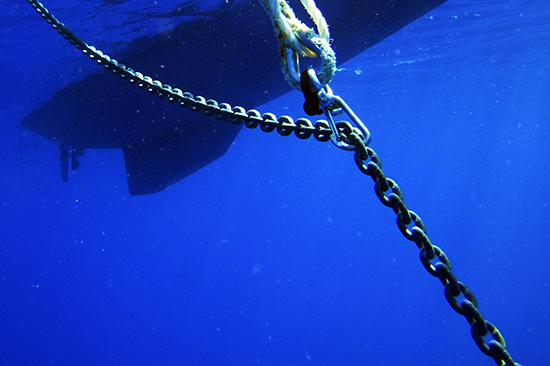- Home
- About Us
- Sailing Courses
- Powerboat Courses
- SLC - International License
- Sailing Vacations
- Find an On-Water Instructor
- Practical Courses
- Fighting Childhood Cancer
- Free Courses Signup
- Student Benefits
- Gift a Sailing Course
- Sailing Opportunities
- Sailing Licenses and Certifications
- About the Sailing Certifications
- Sailing Blog & Helpful Articles
- NauticEd Podcast Series
- Yacht Charter Resources
- School Signup
- Instructor Signup
- Affiliate Signup
- Boat Sharing Software
- Sailing Industry Services
- Support & Contact
- Newsroom
- Privacy Policy
Anchoring a Sailboat | Online Course

Finally, a true Anchoring Course!
Anchoring is one of sailing's most essential skills - learn to anchor like a pro with our online Anchoring a Sailboat Course. Sleep confidently "on the hook" at night, master anchoring techniques for different tides and weather conditions, and learn successful strategies for safe anchoring; including setting 2 anchors and "Med Mooring".
Estimated Time: 4 hours
Price: $17 (or included with the Bareboat Charter Master Bundle)
Enroll now and master anchoring.
Master Anchoring with the Anchoring a Sailboat Course online course and learn how to anchor like a pro, sleep confidently at night, and master anchoring techniques for different tides and weather conditions. Whether you're sailing your own vessel in coastal waters or chartering in the Caribbean or beyond, this online course teaches you how to safely and effectively anchor - one of the most essential and liberating skills you can have as a sailor.
Join course authors Captain Alex and Daria Blackwell as they share their vast practical anchoring experience with you, taking you through all the essential techniques and strategies necessary to anchor safely and efficiently in any situation. From selecting the right anchor and rode to understanding anchoring regulations and avoiding common anchoring mistakes, this course covers all the necessary knowledge and skills to make you a confident and skilled anchorer.
Finally, a true Anchoring Course! Enroll now and take the first step towards mastering the sailor’s art of anchoring.
In this Anchoring a Sailboat Course you will learn:
- Techniques for Setting the Anchor
- Scope, Chafe, Snubbers, Kellets, Trip Lines and More
- Anchorage Selection: Charts & Guides, Picking Your Spot, Swing Radius
- Setting Two Anchors and Med Mooring
- Weighing Anchor
- Tackle and Anchor Selection
- How to fix things on the boat that will go wrong
- What to train your crew on
- Anchoring Etiquette What to buy
- How to be confident about your anchoring skills
We guarantee both your satisfaction AND Lifetime access to any sailing course you buy from us
More About the Anchoring a Sailboat Sailing Course
- The Anchoring course covers all the necessary knowledge and skills to make you a confident and skilled anchorer
- This Sailing lesson takes approximately 4 hours of total time to complete
- Take as long as you need to complete
- Return as many times as you like to review
- Take the online test as many times as you like
- Adds the Anchoring Course to your Sailing Certification
- View an excerpt from the Anchoring a Sailboat Course
This is an ONLINE course and test viewable in your browser window.
Today's Investment: $17
Not convinced yet that online sailing courses are cool? Visit our fully interactive and completely free Basic Sail Trim Sailing Course. You'll see why online e-learning is SO MUCH BETTER than a boring old Book.
By: Captains Alex and Daria Blackwell, authors of Happy Hooking - the Art of Anchoring.
Whether you are sailing your own vessel in coastal waters or chartering in the Caribbean or beyond, knowing how to safely and effectively anchor is one of the most essential and liberating skills you can have. Knowing about anchors, rodes, anchorages, and anchoring techniques is a prerequisite for enjoying an evening in a magically beautiful setting as well as getting a good night’s sleep while swinging from the hook.
Much has changed over the years and the new gear offers serious technical advances over the older standard options. The goal of this course is to either help you get more confident using the gear you have or to help you select new gear and understand how to deploy it correctly. We discuss available equipment and its performance.
This Course will take you about 4 hours to complete including the test. Once completed, it will be automatically added to your personalized Sailing Certificate. This is an incredible value at $17. In fact, we guarantee that you'll enjoy this course or we'll simply refund your $17.
Please enjoy Captains Alex and Daria Blackwell's Anchoring a Sailboat Course.
If you still have questions about NauticEd, the courses, and/or the sailing certifications, contact us via email or phone we're happy to help. Otherwise, register for the Anchoring a Sailboat Course now!

By Alex and Daria Blackwell
USCG Captain Master Mariners
View Anchoring a Sailboat Course excerpt
Student Reviews
Gisela E.
2024, 06 Aug. 14:10
Easy to follow, information presented in light and entertaining way so you don't get bored
Craig B.
2024, 01 Aug. 01:37
Good detail and fair assessment of multiple types of anchors, etc.
Christopher K.
2024, 02 Jun. 17:41
Loved the in-depth manual plotting instruction.
Jason V.
2024, 25 Jan. 02:46
Thorough explanations and visuals that make the instruction easy to understand
Jeff H.
2024, 03 Jan. 05:40
The dive into the different types of anchors made this extra valuable.
Arthur C.
2023, 17 Dec. 19:05
Lots to love. Biggest problem is that I want to buy more anchors!
James J.
2023, 27 Oct. 02:45
The course prepared me for the practical clinic.
Gisle H.
2023, 13 Aug. 00:08
Good summary
Stefan G.
2023, 11 Aug. 08:12
videos
Theodore A.
2023, 02 Aug. 13:19
Interesting course. Love the trick to ride better when waves don't match the wind. Also like the recommendation of a trip line. Finally, rigging anchors in series was valuable and something I've never considered before.
David S.
2023, 06 May. 17:10
Good review for a long time ocean sailor with a few new suggestions which I will use the next time out.
Michael P.
2023, 29 Mar. 09:28
The most comprehensive txt on the subject in any book, media, video
List Price: $17.00
Excerpt from the course
Expand Excerpt from the courseEveryone has their favorites. And so do we!
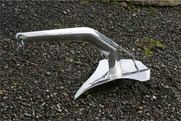 |
Ultra: excellent penetration and holding in most bottoms; easy to stow. |
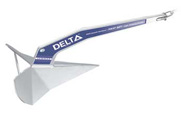 |
Delta: sets well in many bottom types especially in hard mud/sand; useful for kedging and stern deployment. |
|
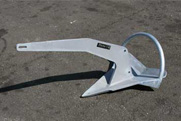 |
Rocna: excellent penetration and holding in most bottoms. Reliable storm anchor. |
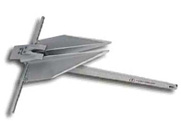 |
Fortress: light weight for holding power; can deploy from dinghy. |
|
After more than 15,000 miles of cruising and anchoring under many trying conditions, we have settled on four anchors onboard. Our primaries have become the Ultra and the Rocna, both new generation scoop type anchors. We deploy them off the bow, with all chain rode on the primary and a chain/rope combination on the secondary, and we absolutely need a windlass to manage them. We have been extremely pleased with the performance of both and have rarely had occasion to reset. Both have been tested under conditions of more than 50 knots sustained wind and significant chop without incident. Both anchors dig deep as the wind increases, they veer well, and do not pull out with drastic changes in wind and tide.
Because of the size of our boat, and consequently our anchors, we also carry lighter weight anchors to deploy for special circumstances, like when we want to deploy a stern anchor or backup anchor. The aluminum Fortress is ideal for deploying via dinghy because of its light weight. The Delta is handy to keep on deck at the stern ready to deploy on a rope road when needed, as when the bottom is harder or composed of shellfish which a Fortress doesn’t like.
Avoid cheap imitations!
We mentioned before that not all anchors of one type are created equally. We lost our trusty Fortress, the original primary anchor on a previous boat, and resorted to using our backup fluke type anchor that was considerably larger than our Fortress but had no identifiable markings. Suddenly, we were having difficulty setting the anchor when we never had problems before. We spent a whole season wondering what had happened to our anchoring skills, until we bought a new Fortress. What a difference! Smaller, lighter, and sets and holds far better than the no brand one, despite appearing almost identical. We have to assume it was a less expensive generic version bought as a backup by the previous owners of our boat.
We have since heard many horror stories from people who bought cheap imitations that looked to them identical to the real thing. Flukes have bent and broken, shanks have sheared off, and some have failed to set and hold at all. Your boat and your well being is worth more than the couple of hundred you may save on a copy.
What we've left on the lawn
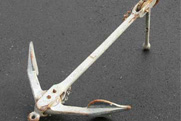
Fisherman 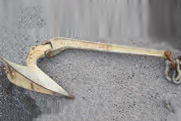
CQR |
The Fisherman and the CQR are our lawn ornaments now. We had ceased using them long ago and simply tired of lugging them around. Both were legacy pieces of very heavy gear that came with our boat when she was commissioned in 1976. We were convinced that the advances in anchor design were significant and our vessel was worthy of the upgrade. We tested many anchors before settling on the ones we carry today. And as a result, we are happy to say, that we have been happily hooking ever since. As we are fond of saying... "If you want a distinctive nautical look for your home, then a fisherman anchor is a must." "One of man's greatest inventions was the plough… And then some 'eejit' made an anchor out of it." |
Other Sailing Courses you might enjoy
Sea talk testimonials
We used NauticEd and it was great in helping us achieve our sailing, and boating goals! We are a 26' Westerly Centaur that is preparing to cross the atlantic starting next Sunday, and will get across by the end of January.

